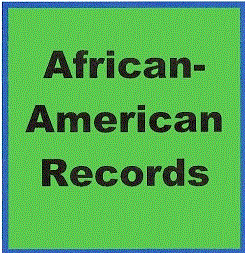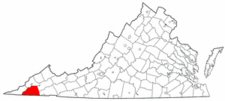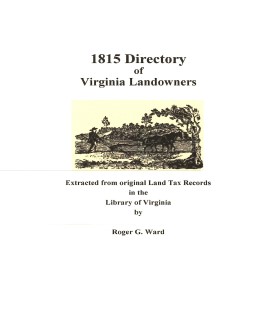






 
Home
Reference
Census Records
Military
African-American
Other States
New Titles
E-BOOKS
FREE SHIPPING IN USA
Iberian Publishing Company's On-Line Catalog:
Scott County Virginia
 Scott County was formed on 24 November 1814 from part of Lee, Russell, and Washington counties. The county's name sought to honor Winfield Scott, a native of Virginia, in recognition of his victories during the War of 1812. The first court met in the home of Benjamin T. Hollins, on February 14, 1815, about two miles east of the current county seat. In 1822 the eastern portion of Powell's Valley (four residences) were transferred from Scott jurisdiction to that of Lee County. In 1856, when a portion of Scott was taken away to form Wise County, Scott achieved its present boundaries.
Scott County lay astride the Old Wilderness Road, which led from Virginia (and North Carolina) into the Kentucky country beyond the mountains. Numbers of settlers passed this way on the journey to the new western lands. Scott County was formed on 24 November 1814 from part of Lee, Russell, and Washington counties. The county's name sought to honor Winfield Scott, a native of Virginia, in recognition of his victories during the War of 1812. The first court met in the home of Benjamin T. Hollins, on February 14, 1815, about two miles east of the current county seat. In 1822 the eastern portion of Powell's Valley (four residences) were transferred from Scott jurisdiction to that of Lee County. In 1856, when a portion of Scott was taken away to form Wise County, Scott achieved its present boundaries.
Scott County lay astride the Old Wilderness Road, which led from Virginia (and North Carolina) into the Kentucky country beyond the mountains. Numbers of settlers passed this way on the journey to the new western lands.
For a better understanding of county boundary changes, see our new section Virginia in Maps
Iberian also has hundreds of titles in e book (PDF) format!! Click here for a complete online catalog of available titles
 SCOTT COUNTY, VIRGINIA WILLS, 1816-1852
Transcribed & edited by Karen Wagner, Treacy, AMDG. iv, 77pp., every-name index (8.25" x 10.75" paperback). Of all the common frontier documents, wills give us the best picture of the families. In the sixty-nine wills of this volume we see how Scott County Virginia people intermarried, how they disposed of their property, and what property they had to dispose of. SCOTT COUNTY, VIRGINIA WILLS, 1816-1852
Transcribed & edited by Karen Wagner, Treacy, AMDG. iv, 77pp., every-name index (8.25" x 10.75" paperback). Of all the common frontier documents, wills give us the best picture of the families. In the sixty-nine wills of this volume we see how Scott County Virginia people intermarried, how they disposed of their property, and what property they had to dispose of.
From the author's introduction:
These documents cover the period 1816-1852, and are recorded in Will Books 1, 2 & 3. The will books were used as catch-all places to record a variety of instruments, mainly performance bonds, and were not suitable for transcribing in full. Will Book 1, for example, contained only 10 wills in 359 pages. One will was found in Deed Book 1.
I chose instead to pull out the individual wills and transcribe them. Researchers should check the will books for possible related documents such as inventories, estate sales, and settlements.
Of interest here are the paired wills of John and Rebecca Anderson, husband and wife (pages 2 and 14) and of Charles McClung Sr and Jr, father and son (pages 48 and 50) with Hugh McClung brother of Charles Sr (page 32). Many wills mention slaves; some emancipate them and some provide care for their declining years . The will of Jonathan Wood (page 57) shows a marked distrust of his daughter's husband, setting up a trust fund in case she should be left destitute.
I have transcribed the texts and names to the best of my ability from the microfilm. I expect there may be errors; there were certainly spots I couldn't decipher. All names are indexed except for the Scott County attesting clerks. I hope this volume provides some missing links for some researchers,
To view a digital copy of the index to this book, visit Index-Scvw
(Use your back arrow to return to Iberian's catalog)
[Scvw] $20.00
 SCOTT COUNTY, VIRGINIA OVERSEERS OF THE POOR, 1815-1850 [Welfare in rural Virginia]
Transcribed & edited by Karen Wagner, Treacy, AMDG. viii, 235pp., every-name index (8.25" x 10.75" paperback). The value of the records of the overseers of the poor cannot be overestimated. Oftentimes, those individuals who fall upon diffiult circumstances or, through no fault of their own happen to be bastards [i.e., base-born] are lost in the official records. They appear here along with a panoply of names of citizens of the county who vote in elections for the officials who will administers the county's largesse. SCOTT COUNTY, VIRGINIA OVERSEERS OF THE POOR, 1815-1850 [Welfare in rural Virginia]
Transcribed & edited by Karen Wagner, Treacy, AMDG. viii, 235pp., every-name index (8.25" x 10.75" paperback). The value of the records of the overseers of the poor cannot be overestimated. Oftentimes, those individuals who fall upon diffiult circumstances or, through no fault of their own happen to be bastards [i.e., base-born] are lost in the official records. They appear here along with a panoply of names of citizens of the county who vote in elections for the officials who will administers the county's largesse.
From the author's introduction:
Childhood poverty.......Out of wedlock births and the need for child support.......Elderly people needing maintenance.......People dependent on public charity.......Single parent households.......Teenage boys roaming the streets.......Vocational training. The social service needs of the early nineteenth century were not much different from those of today. Prior to 1780 those needs were met by the established church, with its system of parishes and church wardens. In 1780 the Virginia General Assembly instituted the Overseers of the Poor, an elective body in each county who were responsible for the needs of their countrymen. This volume collects acts of the Overseers of the Poor in Scott County, Virginia, for the period 1815 to 1850. Scott County was formed in 1815, I cannot explain the earliest documents which appear to predate it.
We are lucky so many of these loose documents remain. Scott County is fortunate never to have had a courthouse fire. Today they are housed at the Library of Virginia and the State Records Center in Richmond VA. I am grateful to the descendants of the Conn family for pointing me in the direction of these papers. I have transcribed all the records I found with the exception of some court summons and other repetitive papers.
The norm for families in this period was the nuclear household, with the father as the chief provider. Out of wedlock births created opportunities for poverty when there was no male provider. Some women managed to support themselves and their households, but most were dependent upon either their own birth family or cash provided by the overseers of the poor, who in turn extracted the money from the fathers by court order. Elizabeth Dean went to court to assert her ability to support her own children. William Hilton attempted to evade his financial responsibilities.
When a woman went to a local justice of the peace and informed him she had an illegitimate child, she acknowledged that it was likely to become a financial obligation on the county, and she swore to the name of the father. The justice then issued a warrant for the putative father, requiring him to give bond and security for his presence at court, where the paternity would be decided and financial obligations set. In many cases there was a delay, sometimes of several years, in the women reporting the births; I assumed that during that interval they had made their own arrangements with the men for support. Only when those fell through did the women bring the law into the picture. Sally Grant and John Loyd worked out a contract for financial support, while Nancy Adams gave custody of her baby to its father. John Brown, who fathered a child on Phebe Peters, defaulted on carrying out the provisions of the court order, and his securities, Jacob and John Peters, were held responsible. Anna Head swore to raise her child herself and to indemnify the overseers if their support became necessary, and her securities included the father and two other men. The overseers notified James Hensley of his dereliction of payments for the support of Anna Peters' child.
In a couple instances women acted as securities for men in bastardy cases. Barbara Miller acted as security for John Lane, and Joshua Barker was supported by Elizabeth Barker.
It is presumed most unmarried women gave birth at their parents' home, but occasionally the event is recorded as occuring elsewhere. Polly Elam delivered at the home of David Sloas; she charged John Sloas with begetting the child. In many cases the dwelling place where the birth occured is described in terms of women, whether there were men present or not. Susan Duncan delivered at the house of Elizabeth Duncan, Mahala Peters at the home of Ann Peters, and Sally Thompson at the home of Peggy Guthery.
One thing quickly became apparent. In 70% of the bastardy cases reported, the occupation of the father is given as laborer. This probably explains why the children were illegitimate: the fathers were not financially prepared to marry and support a family. I would expect that men of other occupations similarly engaged in pre-marital sex, but if a pregnancy occurred they were in a better economic position to marry.
Children typically took the surname of their mother, but not always. Sometimes a child was known by various names, such as Thomas Case and Thomas Mainer, who appear to be the same boy. Sometimes the mother went by various names as well, as in the case of Jane Guthery, who was also known as Jane Starnes, and whose son was David McHenry. Another very mixed name household was Mary Hunter, who had base born children John Thompson, Letha and Matilda Blair, and Squire Hunter.
Perhaps the best known function of the overseers of the poor was to bind out children who were living in poverty into more affluent households where they served as domestic labor and were taught a trade. The master was required to feed and clothe the apprentice, educate them, and give them a sum of money when they completed their time of service. For boys, this lasted until they were twenty one, and for girls it was completed at age eighteen. The usual age to be bound out was around ten (child support lasted until the child was seven). Those who were bound out as infants probably came from situations unusually bleak and unfortunate: William Black a poor child of Michael Black was bound at the age of twelve months, and Archibald Moore, a base born son of Nancy Moore, was bound at thirty months, but since he went to the home of Joel Moore he may have been kept in the family.
Another pathway by which children came to the attention of the overseers was by death of the father. Many who are described as orphans may have had their mother living, but they were without a breadwinner in the household. John McCormick and the Miller boys Abram and John may have been orphans of this type. Complaints were made that they went ‘strolling about through the county'.
The overseers of the poor acted as the center of local networks. Citizens came to them with concerns about children who were neglected, or old people who were in want. The overseer investigated and took action. Permission of the court was sought in binding out children, and funds were allocated at their annual meeting to the caregivers of needy persons. They also reimbursed witnesses who came to court, or who guarded vagrants who were being prosecuted.
At the June annual meeting (a quorum being present) they received and approved claims for persons who had spent money on caring for indigent people. Expenses for terminal illnesses were received, as well as money for support. Patsy Gillam kept a poor man for eleven days and provided the burying clothes and coffin and the burial. For this she received $8.50. The allocations were usually made to the person providing the care, although in 1839 Elisha Smallwood received $5 toward his own support. The overseers calculated the annual budget and divided it among the number of tithables in the county, setting the poor tax which was collected by the sheriff.
Very few negroes were mentioned in these records, but those that were received the same care as their white neighbors. Bob, an old blind negro whose master had died leaving no estate, was brought to the attention of the overseers by the neighborhood, and money was allocated for his care. In 1839 he was supported by James Conn. A female slave named Darkus had one of the highest annual appropriations, for she was of unsound mind and wandered about living by ‘charity, trespass and theft' although the overseers sued at court to make her master take responsibility. He claimed he had freed her years ago. The apprenticeship for Sally Gab, a free child of color, included monetary payments to her mother and to herself upon completion.
It appeared that Scott County in this period had few of the Germanic settlers that were prominent elsewhere in the Virginia Southwest.
The apprentices were still under the watchcare of the overseers and the parents. If a placement was not right it could be modified. Thomas Case/Mainer was re-placed twice. Nancy Johnson applied for a court hearing about the treatment her daughter Frances received and Patsy Albert complained her son William was not being taught a trade. Three incidents show the overseers were alert to the possibilities of sexual exploitation; Benjamin Bowman's daughter was removed from his home because he was charged with rape, Phillip Henry was commanded to court because of ‘lude and immodest conduct' toward Sally Gillam daughter of Elizabeth Buckner. Polly Peters' daughter Druzilla was to be bound out on condition she not be bound to Lewis Dulaney. The reason is not given, but Lewis was accountable for two bastardy claims. On the other hand, Polly was prosecuted by the Commonwealth for assaulting and beating Sarah Dulaney.
The first bastardy claim recorded in Scott County was Polly Rhea against Samuel Ritchie. Ritchie was a prominent man in the county, being a magistrate, surveyor, and member of the overseers of the poor. He did not contest the claim, but his living situation was irregular. He had divorced his wife Ann Porter in 1797, and was living in a common law marriage with Frances Kendrick. His testamentary dispositions did not include this daughter Susanna.
Parents could and did oppose the binding out of their children. Elizabeth Dean, mentioned above, successfully avoided having her children bound by demonstrating her ability to financially provide for them herself. John Sally was summoned to court for ‘detaining and refusing to give up' his son Frederick. Richard Merida had John Pendleton, an overseer of the poor, summoned to court to show cause why the order binding out Merida's three children should not be set aside.
On the other hand, parents could request their children be bound. Anna Courtney's base born son Jesse was bound to his grandfather Jesse Courtney senior to learn the wheelwright trade. In 1828 Richard Sims requested apprenticeships for his six children. In the same year Margaret Gardner asked her children be bound to their grandfather James Smith. There was evidently something unstable in the household, for although Margaret's husband William was living, she seemed to be the responsible person, and the neighbors wrote to the overseers out of concern for the children. They seemed to think the family had been run out of Hawkins County TN to prevent having the children bound out.
An adversarial case was that of Rebecca Murgon vs John Egan. If Rebecca Sturgeon and Rebecca Murgon are the same person, as I believe they are, then she charged John Egan with being the father of her two base born children. However, at the court hearing, he charged her as an unfit person to raise or have the care of them, and the children were bound to him.
The women delivering the bastard babies are described as single women. In one exception, Sarah Agney or Agner was a widow, and in another one Susan Sauder had married and become Susan Johnston before delivering the baby she charged Jonathan Morrison with fathering. The court, however, decided that since she was married at the time of the birth, Jonathan Morrison could not be held liable for the financial support of the child. In Minute Book 2 under the date 8 August 1820 James Webb moved to quash the suit against him on the technicality that the recognizance did not state Nancy Phillips was a single woman. His motion failed.
The many election rolls are an important part of these records. Overseers of the poor were elected for three year terms, and initially there were three from each of the two divisions of the county. Only householders and freeholders were allowed to vote. They could vote for up to three candidates. These are valuable accounts of property owners in early Scott County.
The documents belonging to the Library of Virginia are found mainly in boxes of papers accessioned from the Scott County Courthouse. Five of the boxes, at the State Records Center, are full of packets of papers tied together in bundles, dusted with soot. A box at the Library of Virginia is sorted into files, and another folder contains two apprenticeship indentures. Two more apprenticeship indentures were found in Scott County Will Book 1, pp 201-204.
Other useful works are County Court Records 1815-1819 Scott Co, VA and County Court Records 1819-1824 Scott Co, VA, both 2016, comprising minute books 1 and 2, by James Alan Williams of Banner KY. As will be seen, many apprenticeship indentures are mentioned in the court records that have not survived in paper copies. I made a quick search of the third volume (1824-1828); if the whole of court minutes for this time period were easily available for consultation I am sure a great many more cases would be uncovered. I also used 1850 U.S. Census Scott County, Dr John F. Schunk, Editor, S-K Publications 1990.
The loose documents have been arranged in chronological order, based on the latest date in the document.
A word on the handwriting. I have seen worse. However, where there is a narrative one has a chance to decipher an odd letter by context, but in the lists of names that context is often missing. I have followed verbatim the spelling, capitalization, and punctuation (mostly the lack thereof) with the exception of capitalizing all proper names and months of the year, and omitting doubled words. I know I have made mistakes in interpretation, but I have written what I could see, and leave to the reader to decide what the penman intended. I have grouped many variants of names into one common spelling; thus Gillam, Gillum, Gilliam and Gilham appear in the text as they are written but are all indexed as Gillam. Initials L and S are often indistinguishable, as are capitals H and K. Lower case o and a, and n and r, are likewise very difficult to tell apart. Since James and Joseph are abbreviated Jas and Jos, the two appear very similar, and the reader should seek independent confirmation if I have seemed to invent a hitherto unknown individual. Middle initials are especially prone to multiple interpretations, as there is not even the rest of the word to give context. Why anyone would ever embark on a career as a transcriptionist is beyond me!
In the following lists I have extracted the bastardy cases from the documents making up this book and from the first three volumes of court minutes. The first year listed is the date the case came to the attention of the magistrates and overseers, the year in parentheses is the date of birth. The occupation of the father is listed if given. I have also listed the children referred to the overseers of the poor for binding out, from both sources. Their status as orphans or base born (bb) is listed if given. Other pertinent facts are noted. There is also a list summarizing the apprenticeship indentures: a few are given in full in the text but they are so repetitive that an abstract can easily give the pertinant information.
To view a digital copy of the index to this book, visit Index-Scop
(Use your back arrow to return to Iberian's catalog)
[Scop] $36.00
 SELECTED DEATH RECORDS (ANNOTATED) FROM BUCHANAN, DICKENSON, LEE, SCOTT, AND WISE COUNTIES, VIRGINIA
Researched by Thomas Jack Hockett; compiled by Donald Helton. iv,265pp., every-name index (8.25" x 10.75" paperback). The author has gathered together more than three thousand death records from the counties listed above. The majority of the records carry annotations drawn from a myriad of sources.
This work is the result of more than eight years research in the Archives of Virginia transcribing and annotating selected death records from these southwestern counties. This is an important resource for researchers working in the region. SELECTED DEATH RECORDS (ANNOTATED) FROM BUCHANAN, DICKENSON, LEE, SCOTT, AND WISE COUNTIES, VIRGINIA
Researched by Thomas Jack Hockett; compiled by Donald Helton. iv,265pp., every-name index (8.25" x 10.75" paperback). The author has gathered together more than three thousand death records from the counties listed above. The majority of the records carry annotations drawn from a myriad of sources.
This work is the result of more than eight years research in the Archives of Virginia transcribing and annotating selected death records from these southwestern counties. This is an important resource for researchers working in the region.
To view a digital copy of the index to this book, visit Index-Sdra
(Use your back arrow to return to Iberian's catalog)
[SDRA] $37.95
The above title is also available as a digital e-book in PDF format:
[ESDRA] $25.00 (electronic version)
 SELECTED DEATH RECORDS OF SOUTHWEST VIRGINIANS WHO DIED IN MISSOURI (OR WERE RELATED TO THOSE WHO DIED IN MISSOURI (with additions from Iowa and Sullivan County/East Tennessee)
Researched by Thomas Jack Hockett; Abstracted & compiled by by Donald W. Helton. iv,220pp., every-name index (8.25" x 10.75" paperback). These deaths are taken from a variety of sources and methods employed, including "hunt and seek", census, on-line sources at Rootsweb, Ancestry, IGI, Family Genealogy Forums, censuses, etc. and the very valuable Missouri Death Certificates 1912-1958 which are generously available online. These deaths of mid and extreme SW VA people in MO during the subject time likely represent only a fraction of the deaths which could be ferreted out with difficulty employing 2-4 sources (in conjunction) in conjunction. The work represents considerable labor (not to mention eye-strain) and it is hoped it will bolster further the efforts to document the migration of SW VA persons”. SELECTED DEATH RECORDS OF SOUTHWEST VIRGINIANS WHO DIED IN MISSOURI (OR WERE RELATED TO THOSE WHO DIED IN MISSOURI (with additions from Iowa and Sullivan County/East Tennessee)
Researched by Thomas Jack Hockett; Abstracted & compiled by by Donald W. Helton. iv,220pp., every-name index (8.25" x 10.75" paperback). These deaths are taken from a variety of sources and methods employed, including "hunt and seek", census, on-line sources at Rootsweb, Ancestry, IGI, Family Genealogy Forums, censuses, etc. and the very valuable Missouri Death Certificates 1912-1958 which are generously available online. These deaths of mid and extreme SW VA people in MO during the subject time likely represent only a fraction of the deaths which could be ferreted out with difficulty employing 2-4 sources (in conjunction) in conjunction. The work represents considerable labor (not to mention eye-strain) and it is hoped it will bolster further the efforts to document the migration of SW VA persons”.
During the process of abstracting and compiling the death records listed herein, instances of conflict occurred between the certificate and additional information found on-line. The information is entered as found. Any such conflicts are left to the discretion of the reader to reconcile.
Table of contents
Missouri Deaths from
Washington County 1
Wythe Co., Va 43
Russell Co., Va 56
Grayson/Carroll Cos., VA 80
Smyth Co., Va 85
Tazewell Co., Va 101
Lee Co., Va 118
Scott Co., Va 138
Dickenson Co., Va 151
Buchanan Co., Va 154
Miscellaneous Deaths from southwest Va. 181
Iowa Deaths from Southwest Virginia 193
Alphabetical Index 202
To view a digital copy of the index to this book, visit Index-Sdmo
(Use your back arrow to return to Iberian's catalog)
[SDMO] $31.95
The above title is also available as a digital e-book in PDF format:
[ESDMO] $20.00 (electronic version)
SCOTT COUNTY MARRIAGES, 1815-1853
Mary D. Fugate. 1989, x, 109 pages, indices, figure, map. Scott County was formed in 1814 from portions
of Lee, Washington, and Russell counties. In March, 1775, Daniel Boone made a road through Big Moccasin
Gap in this county, following an older Indian Path. The trail became known as the Wilderness Road, and for
many years it was a main route to Kentucky from the East. A total of 1,413 marriages are recorded in this
current volume.
Family names and miscellaneous data included in the Scott Co., VA Marriages, 1815-1853 are available here: Surname list
[Scot] $14.95
The above title is also available as a digital e-book in PDF format:
[ESCOT] $8.00 (electronic version)
 Scott Co. 1815 Directory of Landowners
by Roger G. Ward. 2005. 12 pages, map, 5 1/2X8 1/2. Scott Co. 1815 Directory of Landowners
by Roger G. Ward. 2005. 12 pages, map, 5 1/2X8 1/2.
For a full description of the 1815 LAND DIRECTORY Records and a listing of available counties, see:
Individual County Booklets, 1815 Directory of Virginia Landowners
[Vd92] $6.00
The above title is also available as a digital e-book in PDF format:
[EVd92] $4.50 (electronic version)
For more records pertaining to SCOTT COUNTY, VIRGINIA see
also:
|| Virginia/W.Va. || General Reference || Military Records ||
|| Other States || E-Books || New Titles || Home Page || E-Books ||
Copyright 2025 Iberian Publishing Company
|